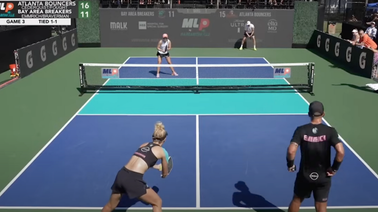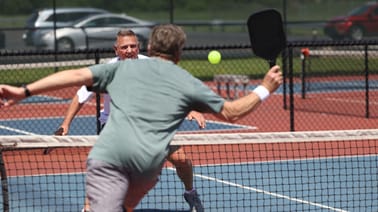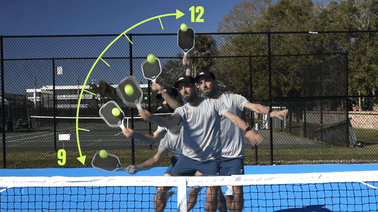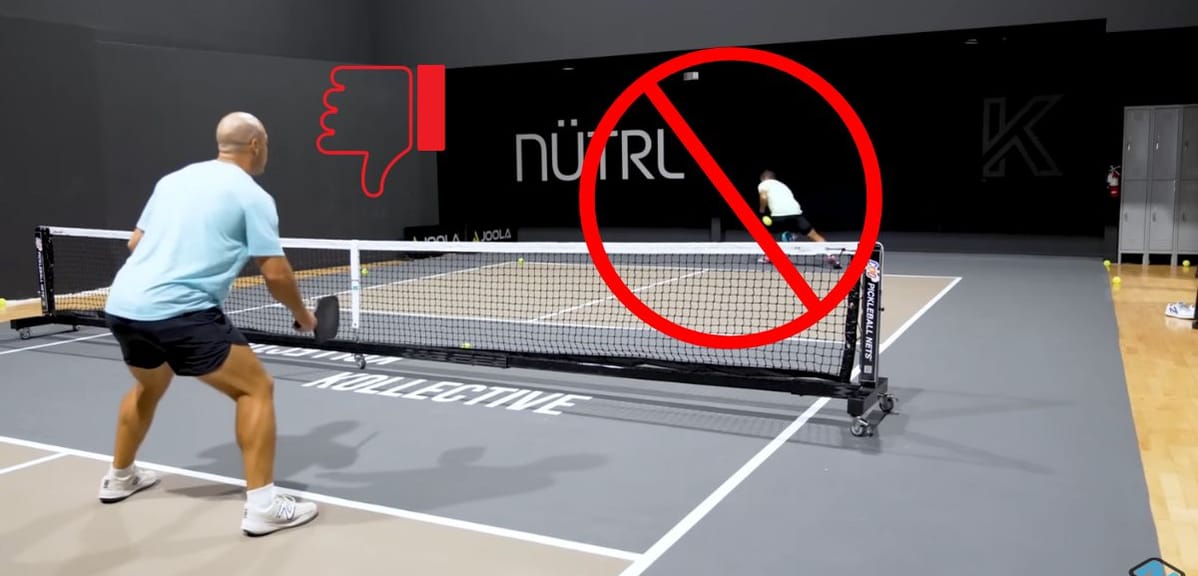
You want to play like the pros. It’s only natural to try to imitate Ben Johns or Catherine Parenteau.
But until you’ve put in the time, there are some things you should leave to the pros. Zane Navratil has a list of 8 things amateurs shouldn’t do.
1. Add a ton of lead tape to your paddle
Sure everybody wants more power but weighting up your paddle can eliminate your control. More mass means the ball is going to fly off your paddle. Drops that usually fall in the kitchen will sail too high.
Volleys will sail off of your paddle and out of bounds until you learn to control the weight. Your hand speed will also be slowed with added weight to sling around.
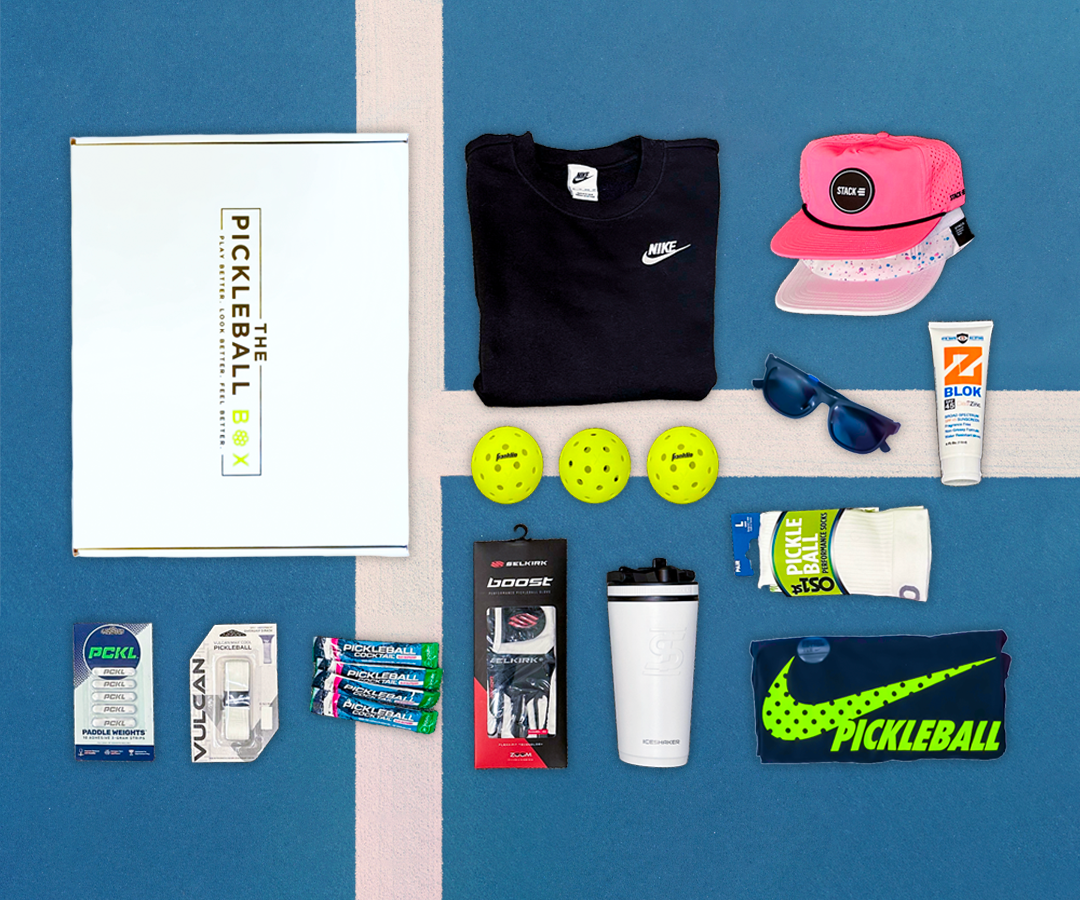
Introducing: The Pickleball Box
The hottest accessories, gear, and equipment curated for the Pickleball addict and shipped directly to your door.
2. Attempt tweeners
Not much more to say here. It’s a low percent shot that has a high risk of embarrassing injury.
3. Flicking the wrist and low speedups
These skills take time to learn. It is not something you can walk onto the court and master. Wrist movement allows the ball to get off target with any flaw in technique. Low speedups are a recipe for hitting the ball into the net or sailing it deep.
4. Changing grip at the kitchen line
A well executed grip change can give you more spin and open up what’s possible on the court. The problem is it will also lead to mistakes if not done well. Save it for the pros for now.
5. Heavy topspin dinks
Heavy topspin dinks on both the forehand and backhand side have become popular at the pro level. Anna Leigh Water's two hand backhand dink creates headaches for her opponents every week.
Zane points out how difficult this shot is based on the tight space at the kitchen line. The window is so small it's hard to get the ball over the net and have it dip before it reaches your opponent.
He explains that the ball only has time to rotate 10 to 15 times in such a tight space. That means unless the shot is hit perfectly, it won't have a large impact.
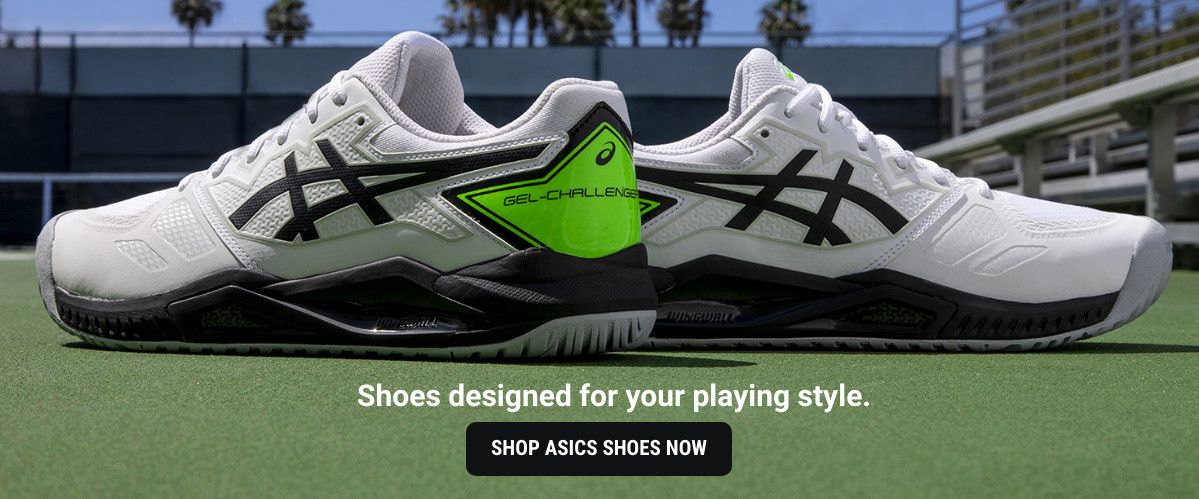
It's time to upgrade your shoes. Save 10% at fromuthpickleball.com with code 10DINK.
6. Let the ball get behind you
As an amateur, you need to hustle to keep the ball in front of you. That means taking an extra step back when a ball is going to get by you.
Zane uses JW Johnson as an example of how some pros can reach back and hit a ball with skill and accuracy. For most people leaning back and hitting a ball will result in a pop-up.
7. Ripping the ball from the transition zone
Your opponent has time to react to your speedups from the transition zone. Because of the distance between you and them, they can put the next ball at your feet.
For the most part, Zane suggests soft play in the transition zone so you can reach the kitchen line. That doesn't mean you can't still let loose on a floater if the opportunity arises.
8. Resetting
Number 8 will probably get met with the most opposition. It may seem strange to think you shouldn't reset the ball.
Zane's point here is that it's a very challenging shot, even more difficult than counterattacking. There is very little space to safely land a reset in front of your opponent.
Plus the reset doesn't provide any offense. It helps you not to lose the point but does not put pressure on your opponent.
Focus on honing the counterattack skills for the time being.
Get tips to up your game delivered to your inbox 3x a week with The Dink Newsletter.





